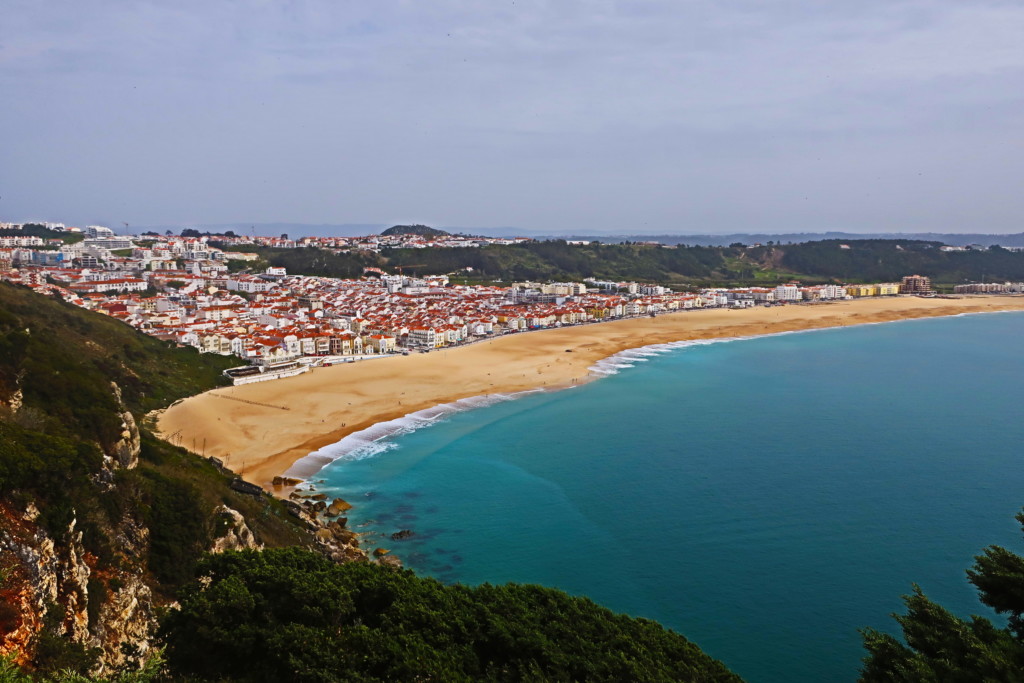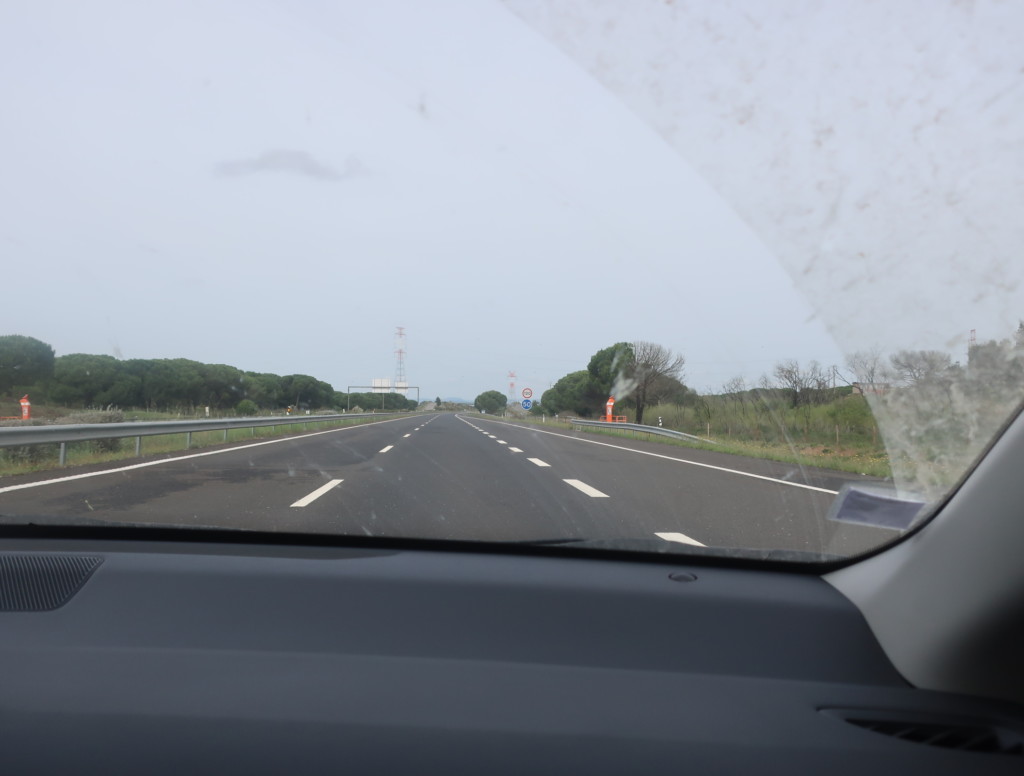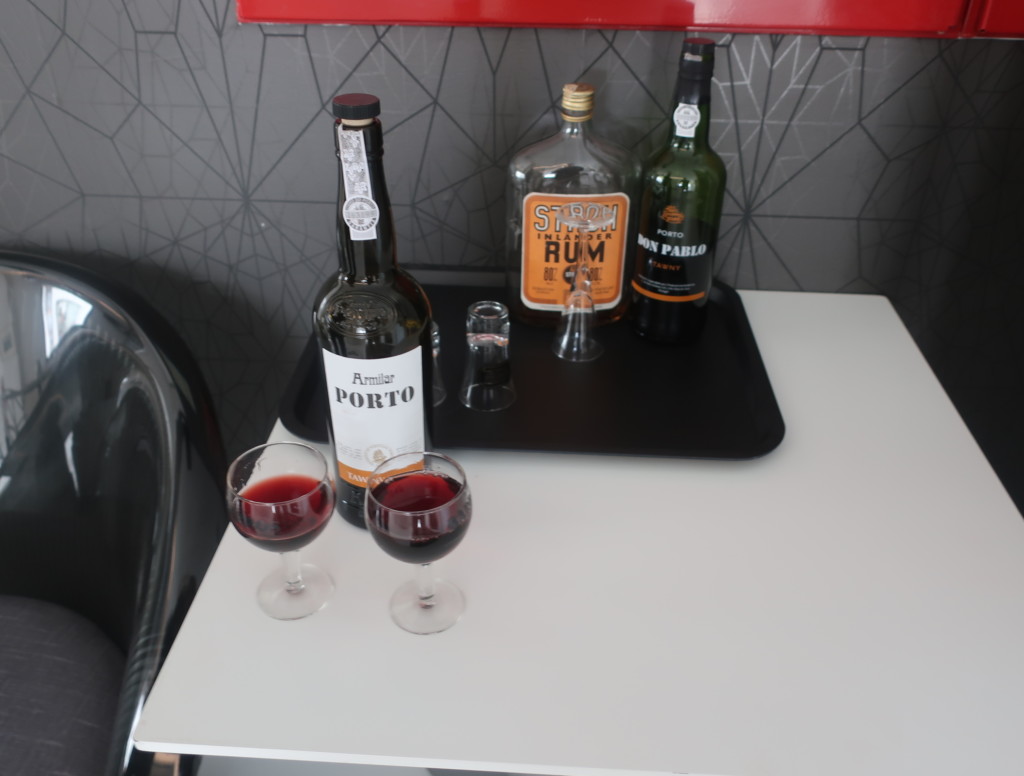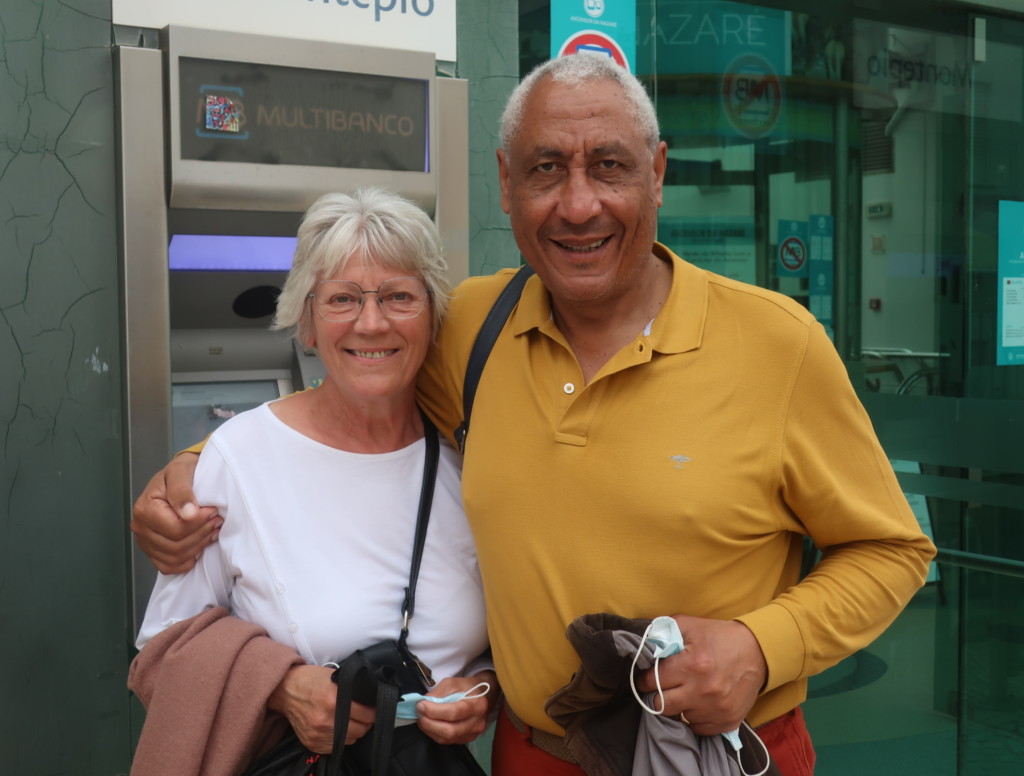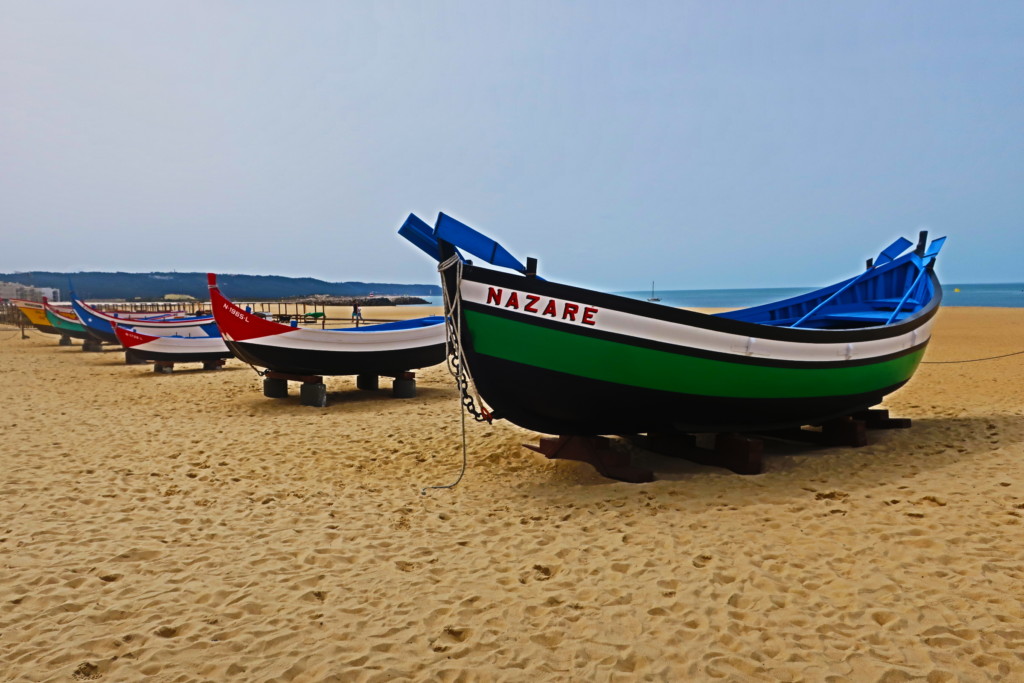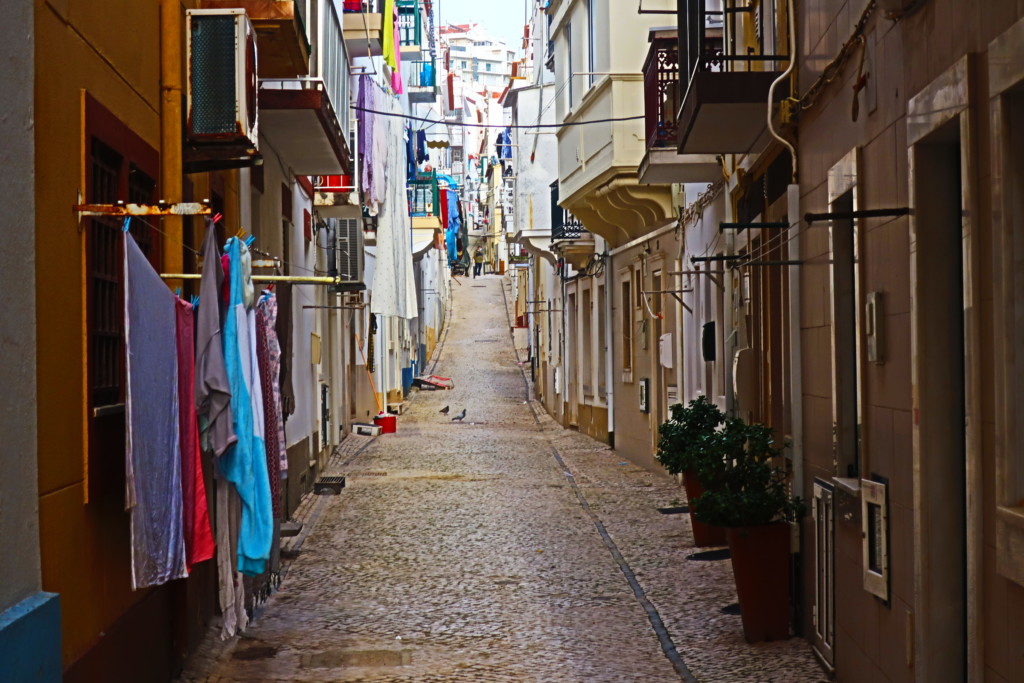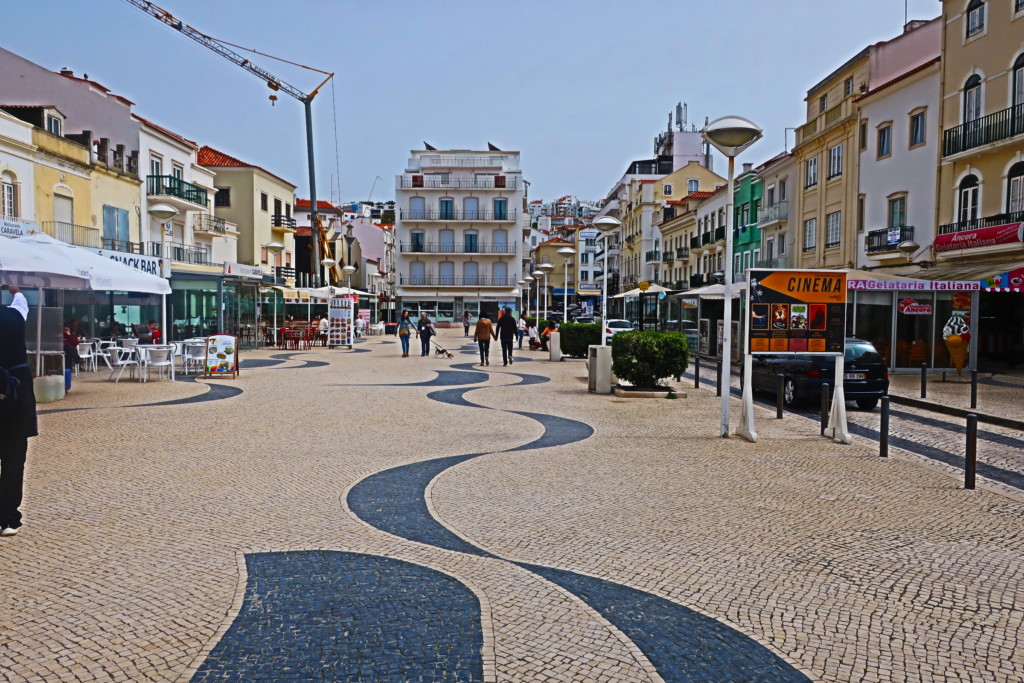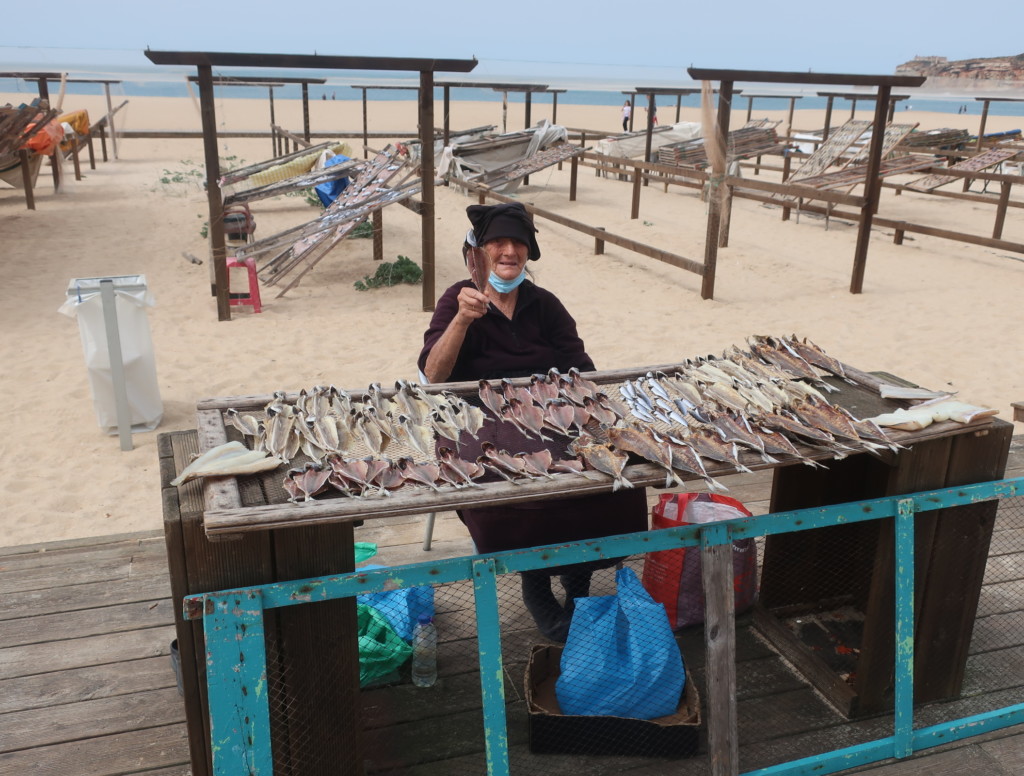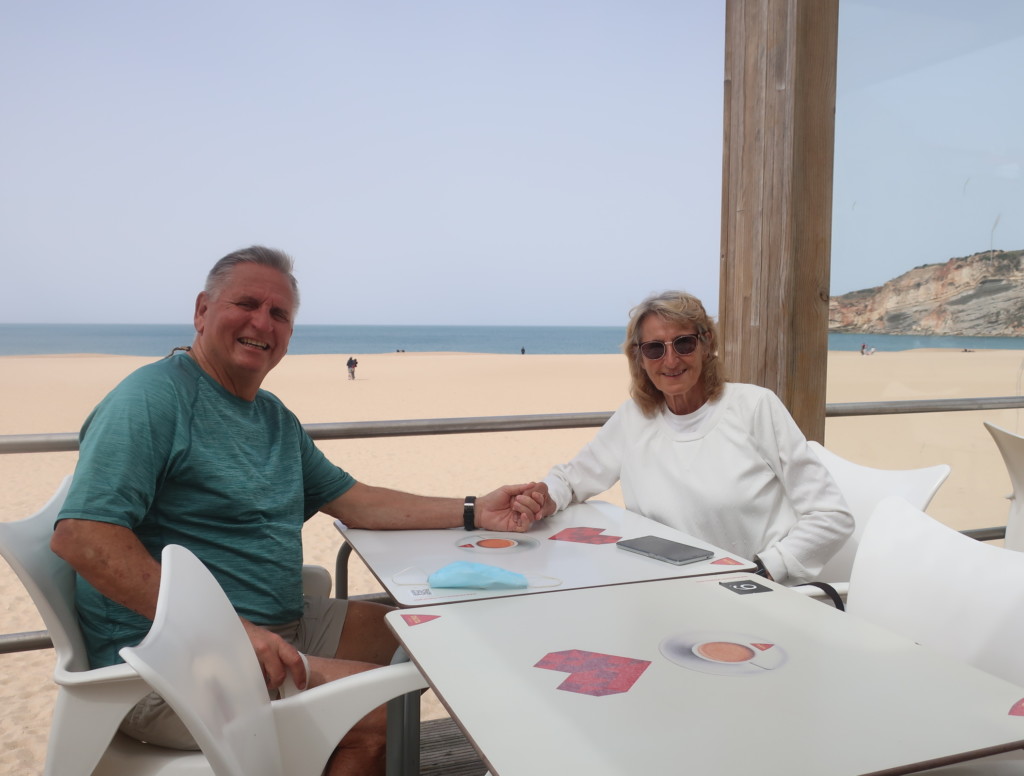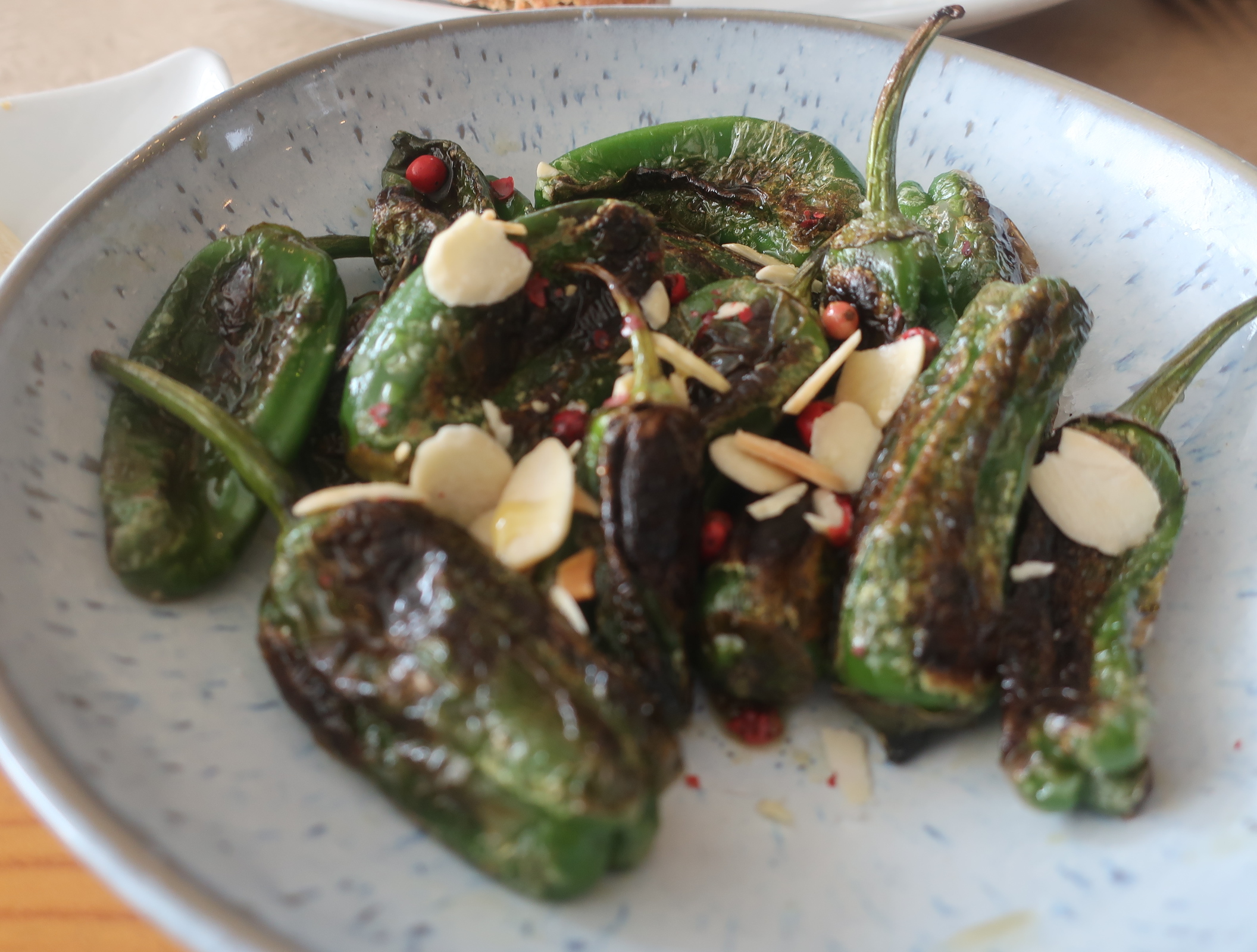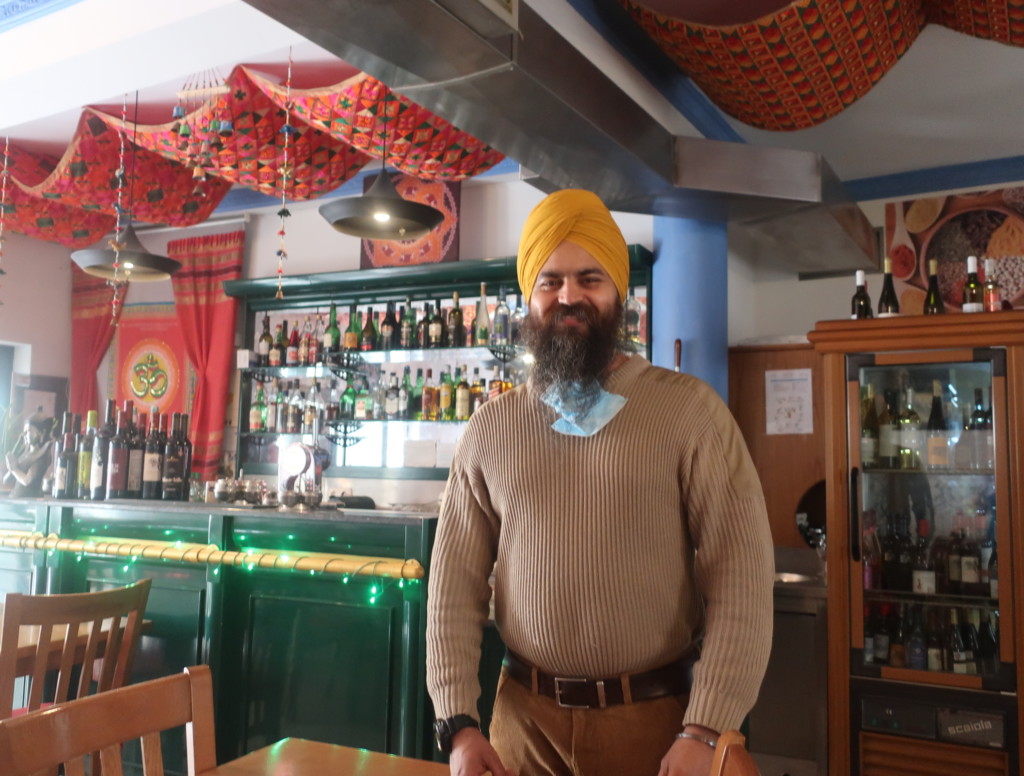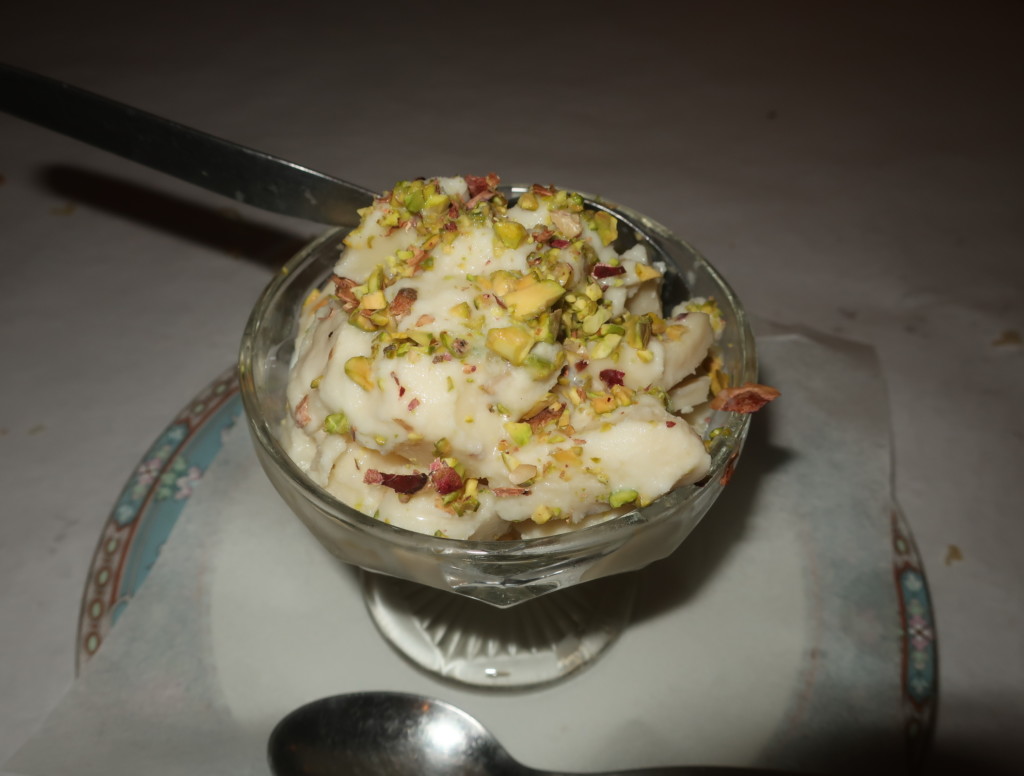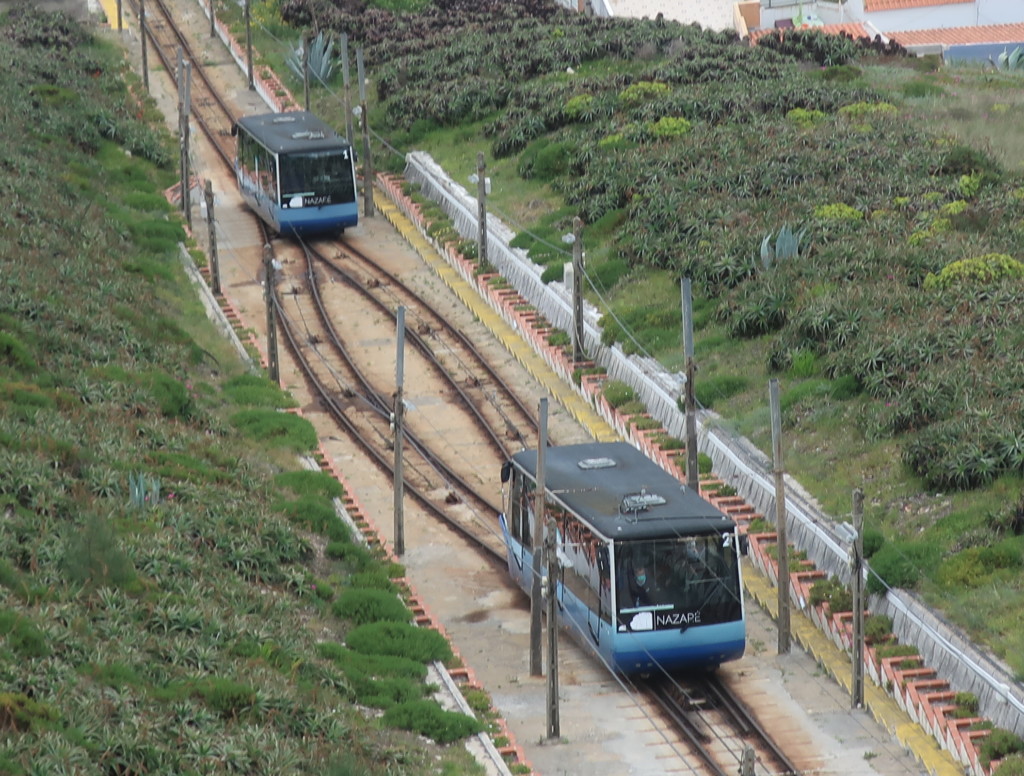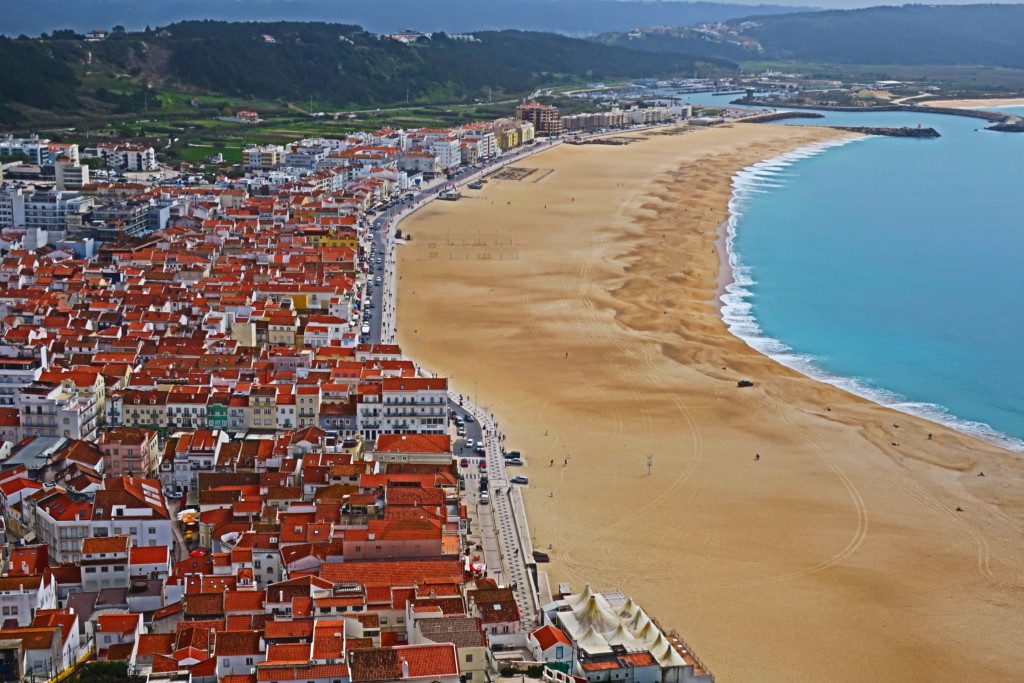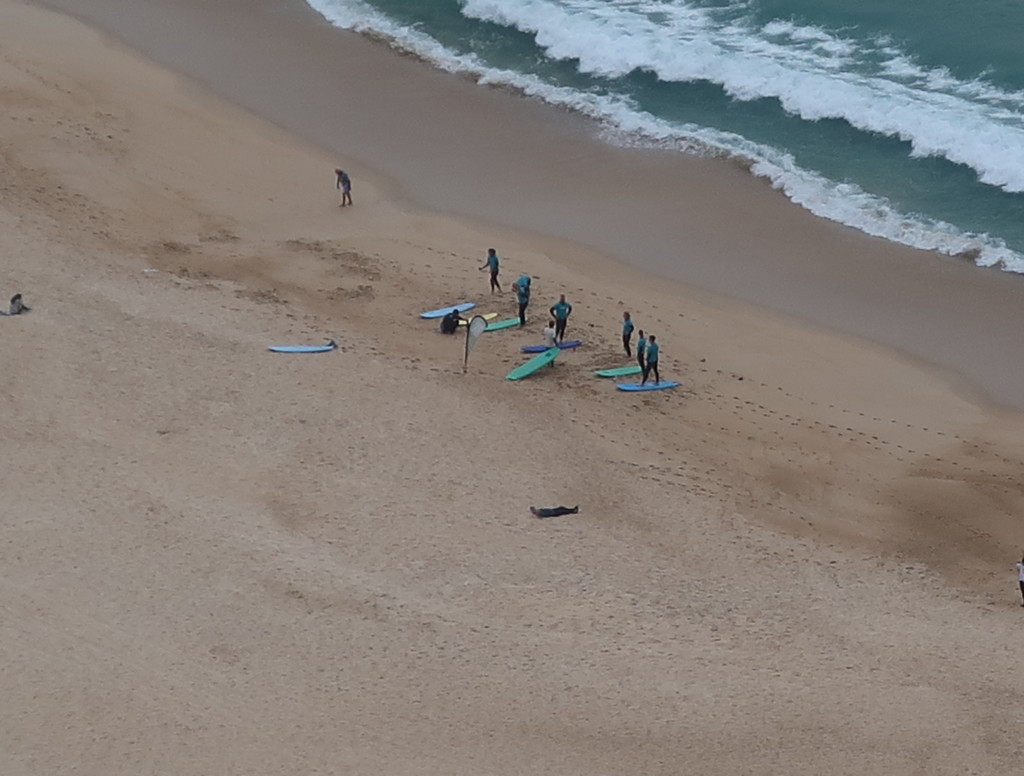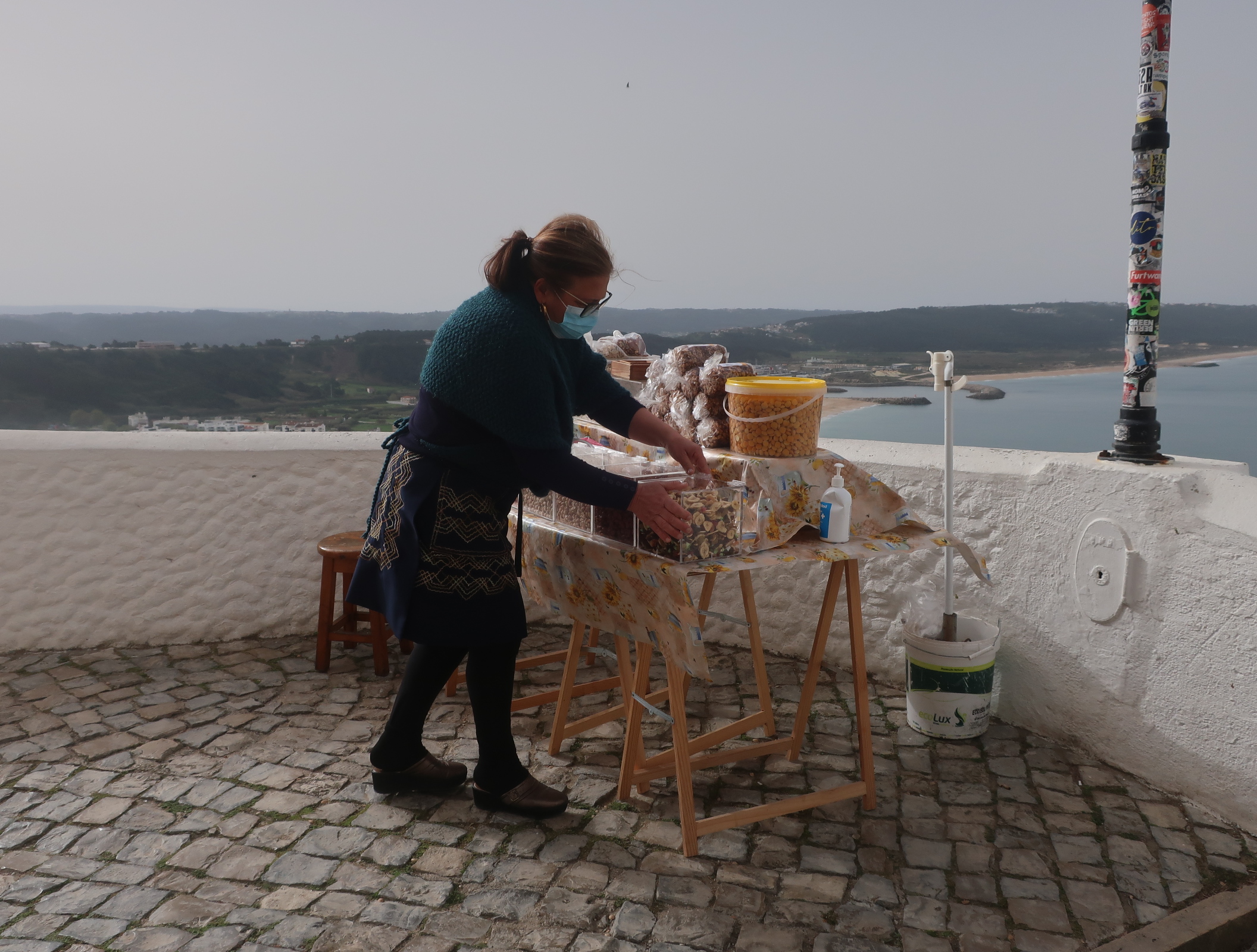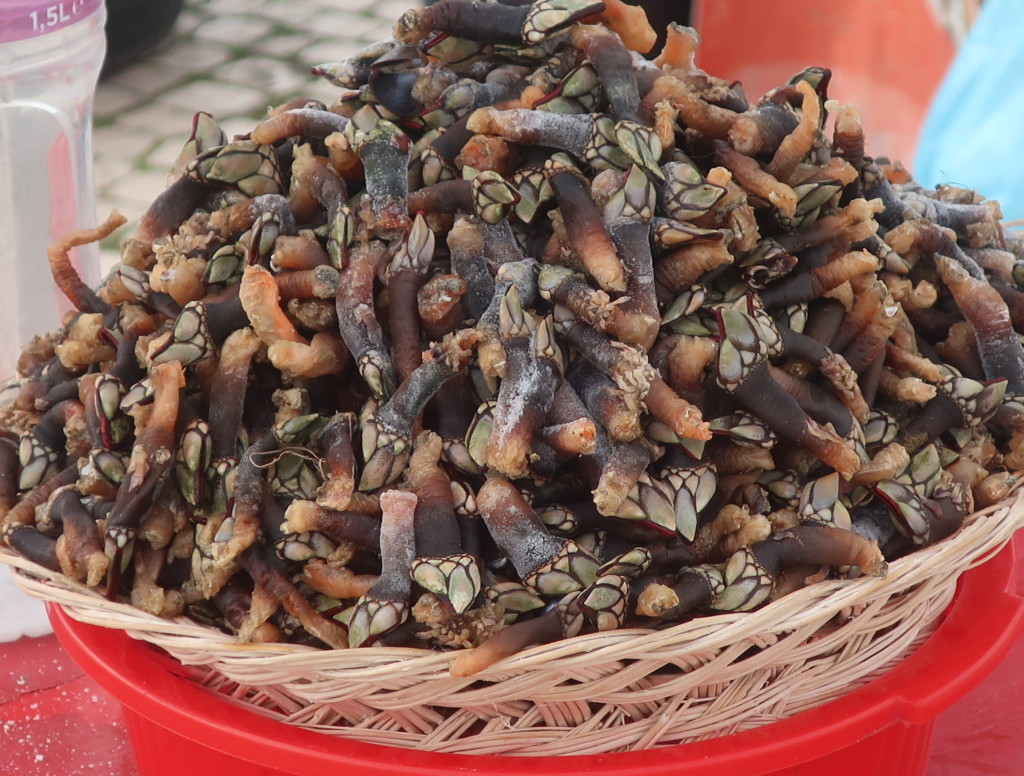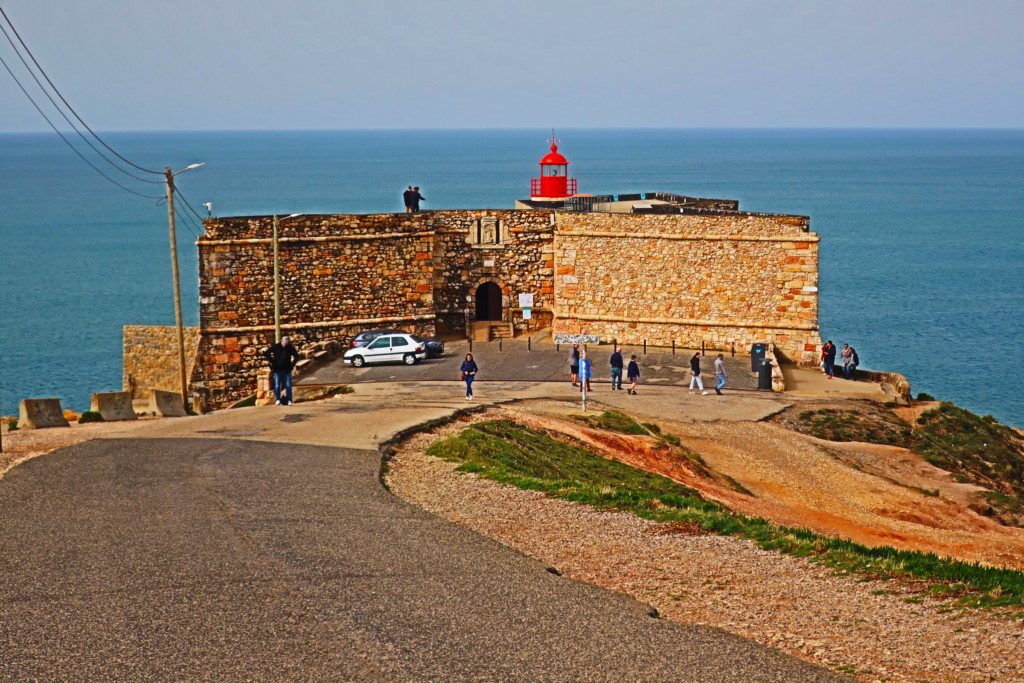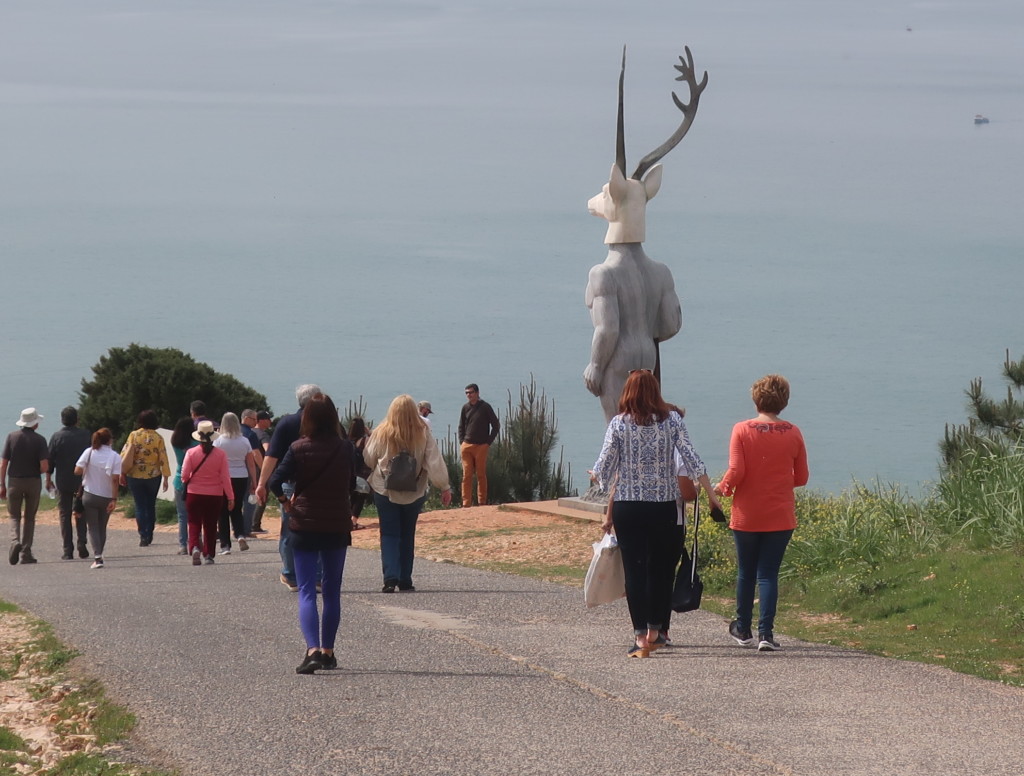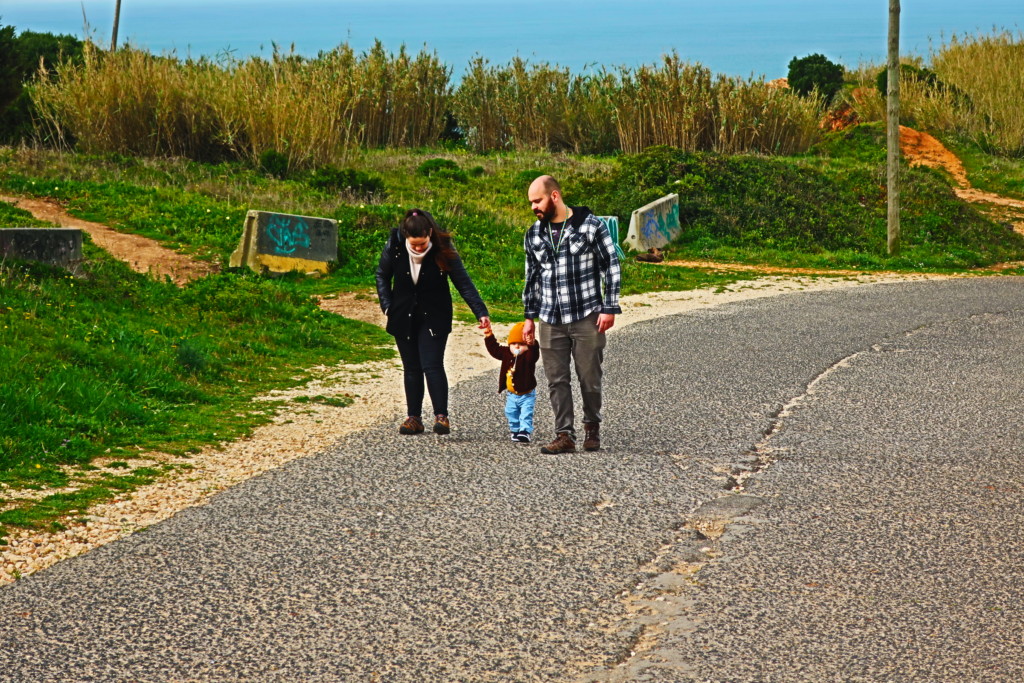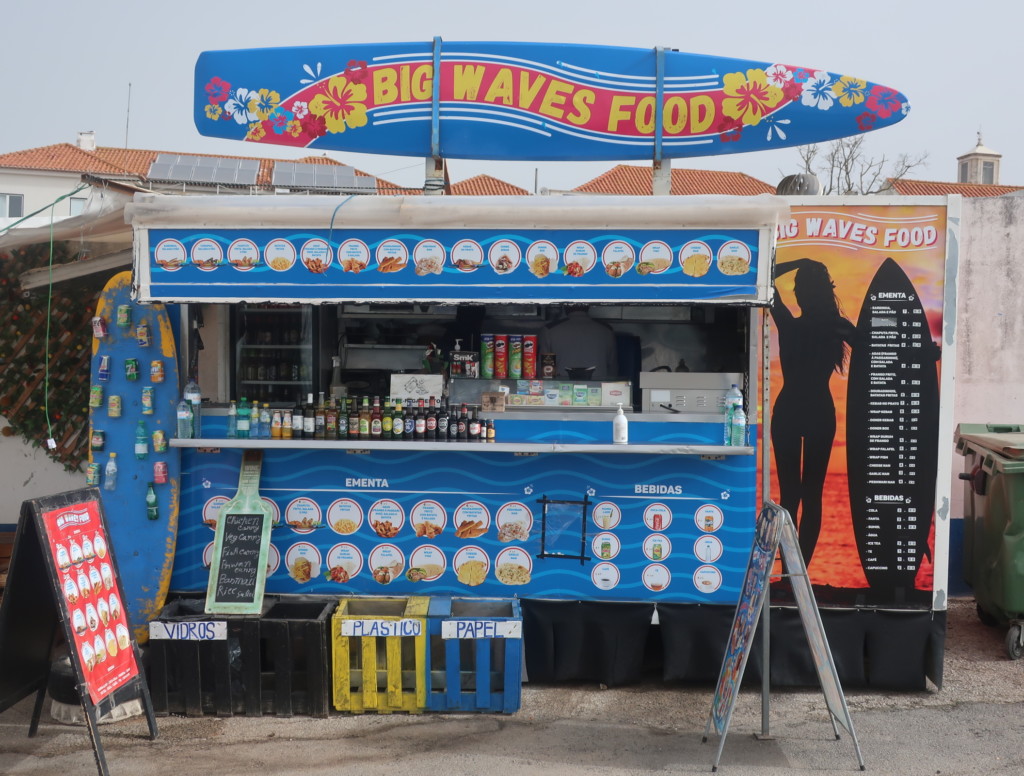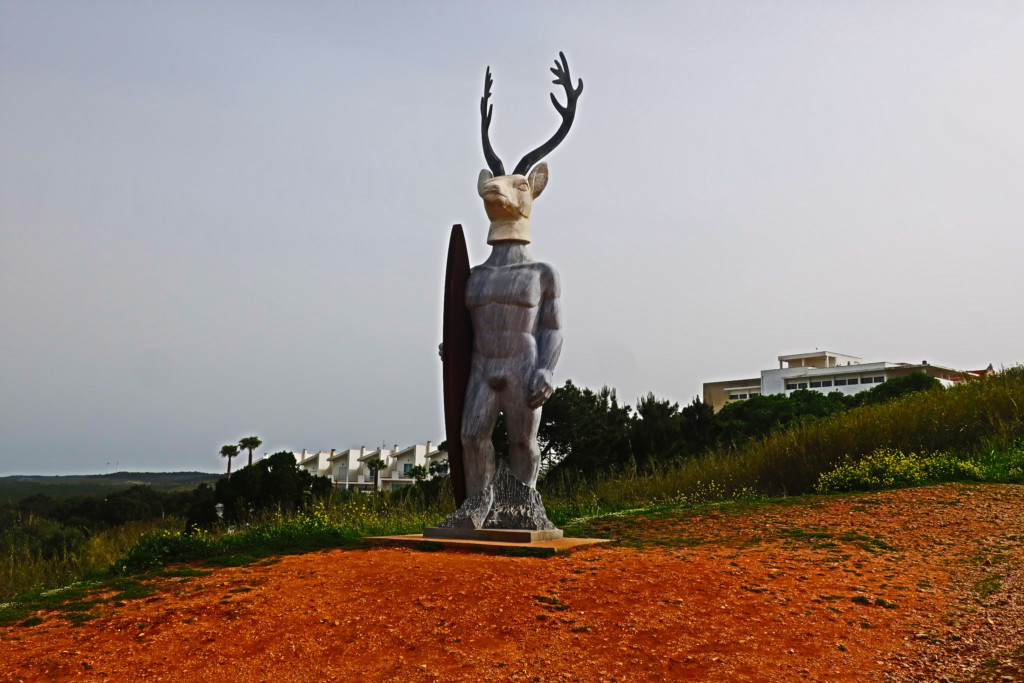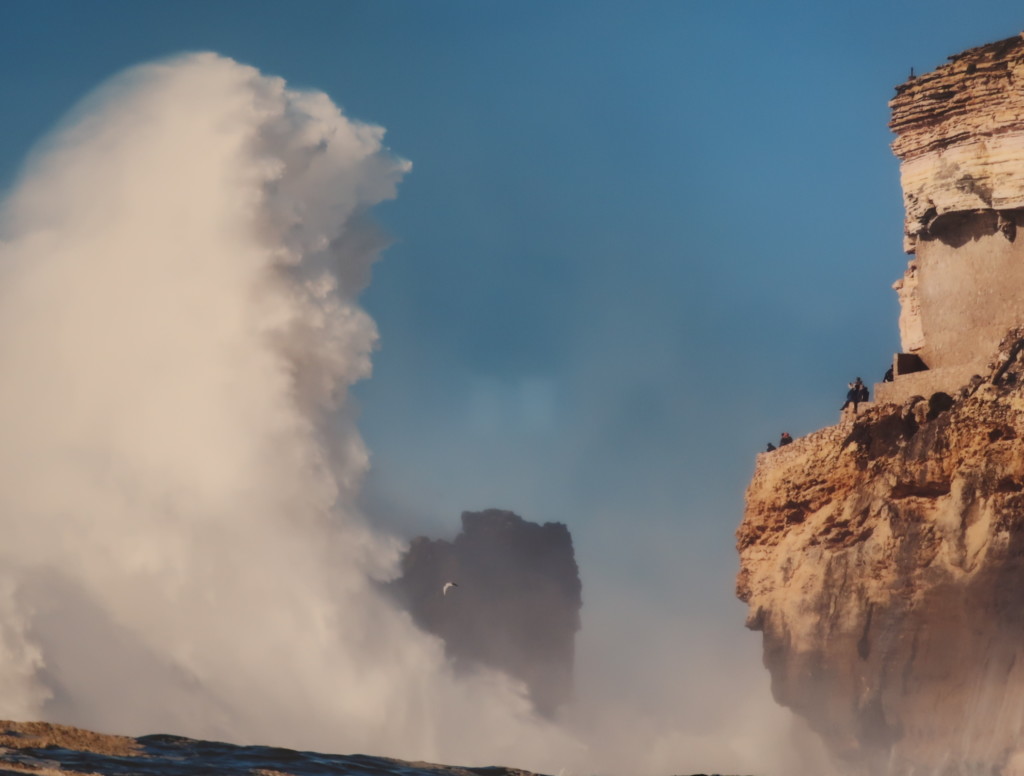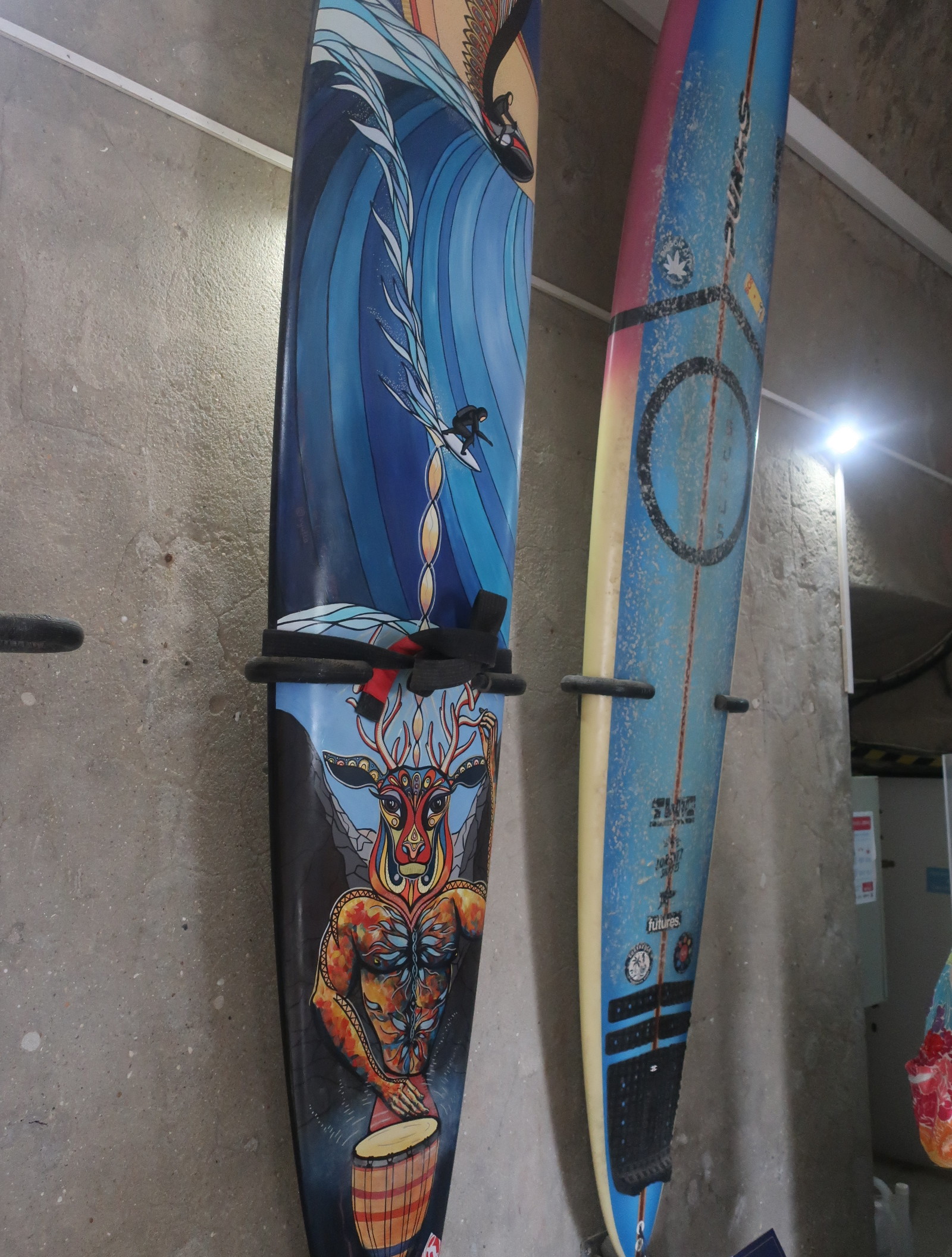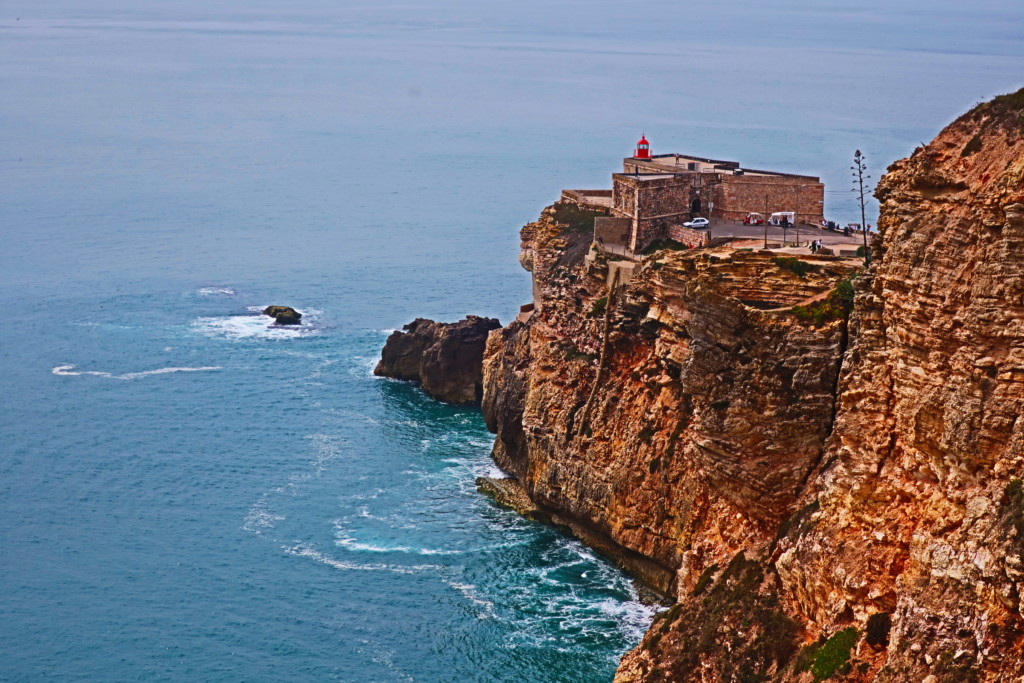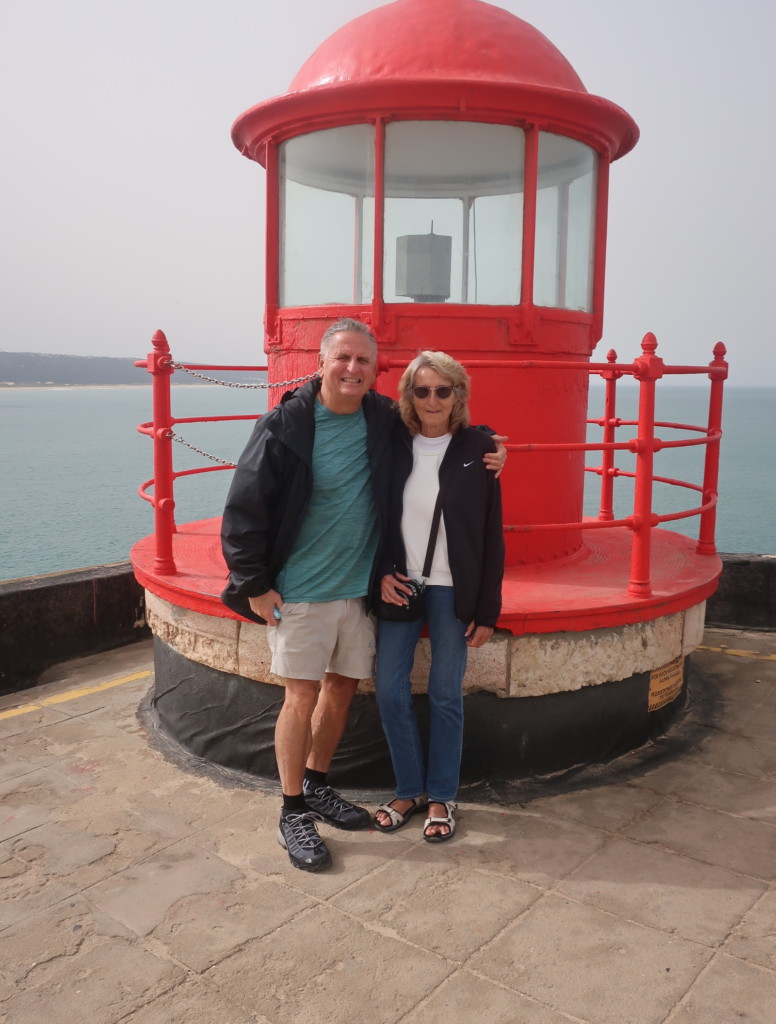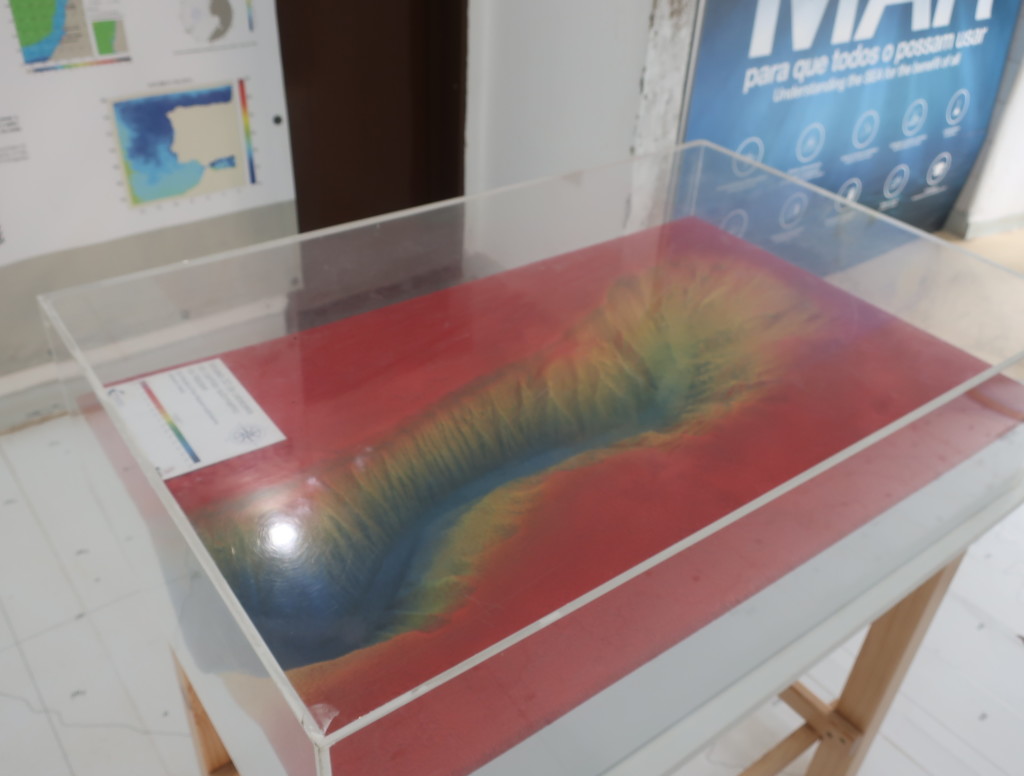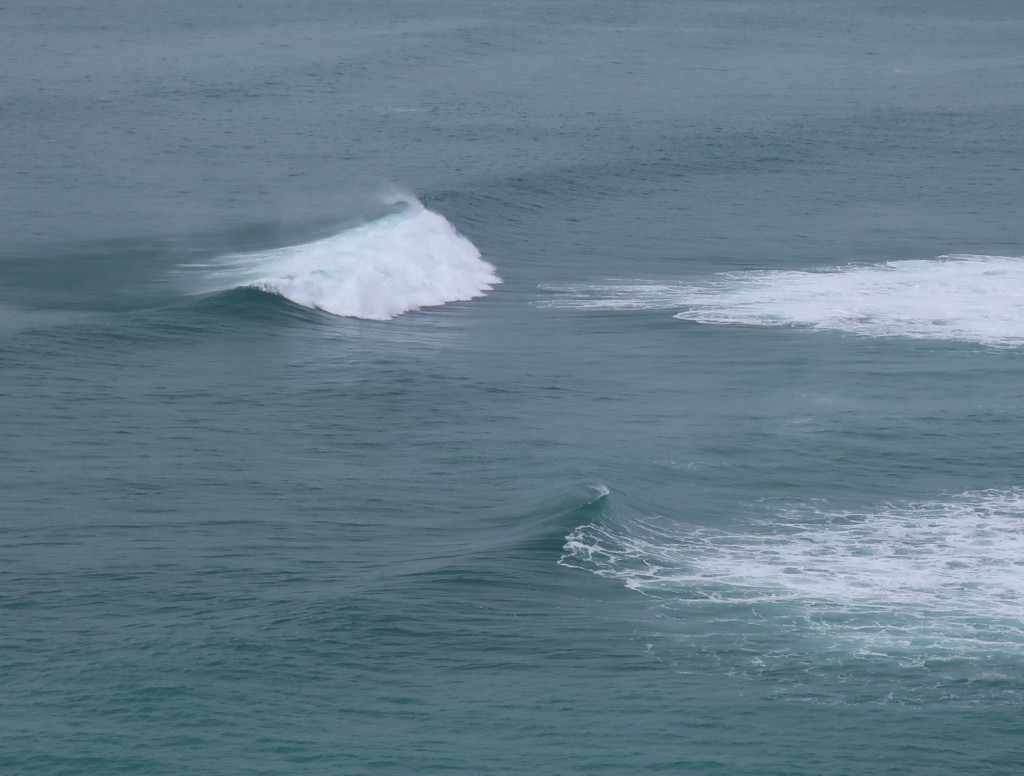Leaving Evora, we trekked two and a half hours northwest to the seaside town of Nazare. From Lisbon, Nazare is but an hour and half north. It is the huge eighty-foot waves that has placed Nazare on the map. It has become a mecca for surfers, particularly in winter when the largest waves arrive.
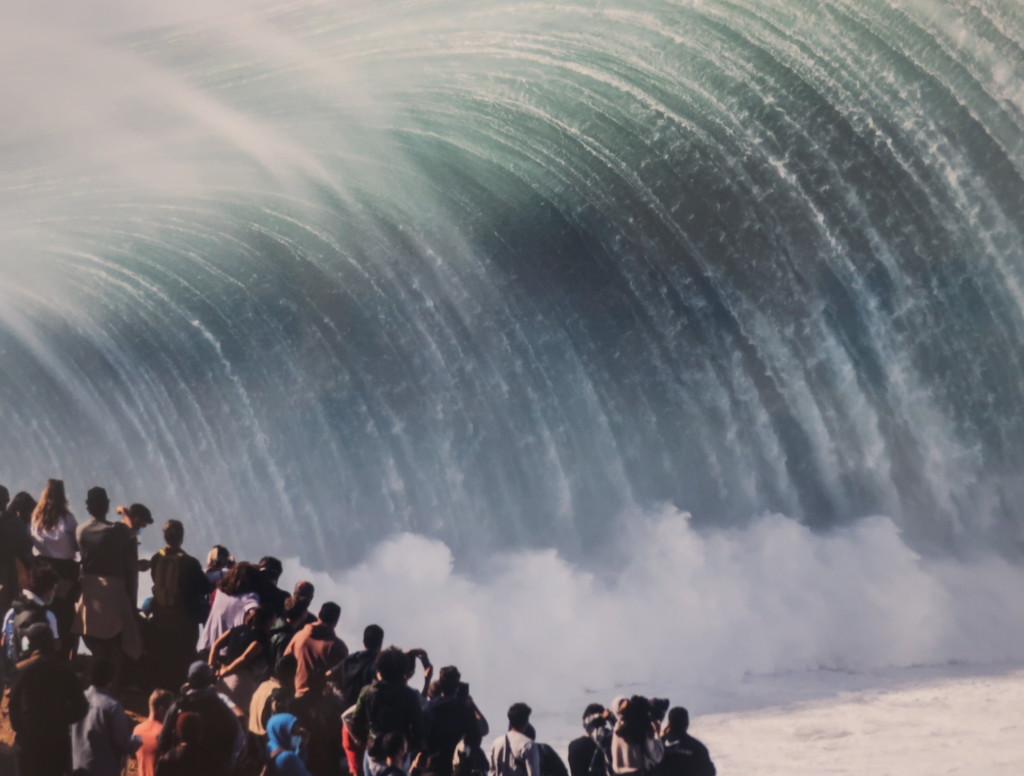
Once again, we took one of Portugal’s toll roads to cross country. There were but a few cars using these roads. These roads are expensive and the Portuguese have learned to use the “free” roads.
We stayed in Hotel Magic recommended by Rick Steves. It was indeed clean and friendly. This was our most inexpensive hotel in our 18 days, $80. We were greeted with Port wine in the foyer.
We did have a first-floor room with a very limited view.
European breakfasts are always a highlight.
We always like to meet new people in the early morning. In this case, it was Monique and Batrice from Nice, France. They spoke perfect English. They met at the University of Paris as teachers.
Nazare was once a sleepy fishing village. Sardines and Mackerel were caught and dried on this very wide beach. The boats are more for show than anything else. Besides the surfing, Nazare has become a beachside resort, particularly in the summer.
There are plenty of narrow alley-ways to explore. Clothes hanging out for natural ventilation.
Like most of Portugal, the streets are made with 4 x 4 inch marble squares. Many times the streets are well decorated. Watch out if it rains!
There is a small port at the southern end. I came across a boat named Mola-mola—the name of my favorite Sun Fish.
A woman was selling dried Sardines and Mackerel. She is dressed in black to show that she is a widow.
We did find a small restaurant to relax and take in some of the views.
We did have lunch with a serving of bread, Patron’s (Spanish peppers) and clams.
Our favorite lunch was at an Indian Restaurant. The owner came to Portugal via Scotland about 8 years ago.
There is nothing better than good curried chicken. Kathie enjoyed chicken smothered in spinach. It was, indeed, delicious.
We did fall in love with the Pistachio ice-cream.
We took the funicular up nearly a thousand-foot ridge. The first funicular was built in 1889, the same year as the Eifel Tower, and by a disciple of Gustav Eifel.
One passenger car holds about 60 people and cost a little more than four dollars for a round trip. Every 15 minutes a car goes up, and another comes down. It does save on using your knees.
The view at the top is majestic.
From the top, one can spot a surf lesson going on:
You may encounter sisters trying to sell you various items of nuts. There was even a vendor that sold toy boats.
There was one vendor that was selling barnacles, known as “percebes.” We passed on those.
Sitio is a quant village with a beautiful church.
A road goes down to the lighthouse/fort/museum. Cars are not permitted on the road due to lack of space at the end of the peninsula. Entrance fee was a dollar.
One can hire a Tuk-tuk to for 2 dollars one-way.
Most people, like us, just walk the half-mile down to the lighthouse/fort/museum.
Some people stop at the kiosk near the top of the road to pick-up and enjoy various beverages. Music was blaring at this kiosk.
Along the way is a large “Deer-man.” At one time, this area was filled with plenty of deer. It does make a good photo stop.
Obviously, the surf was not up when we visited. It is near this lighthouse where incredible surfing has been done, and plenty of pictures to prove it. The following pictures were taken from the surf museum pics.
There is a unique surf museum with various historical surfing items. In 2017, A Brazilian surfer managed to survive an 80-foot wave. You can go on You-Tube and watch the incredible surfing in Nazare. More recently, a German surfer, Sebastian Steudtner, eclipsed the previous record cascading down a 86 foot wave in October of 2020.
The top of the facility is a lighthouse.
Why is this area good for surfing? There is an underwater canyon that literally funnels waves to shore.
Even though it was flat, on the northern side there were good size waves to see during our March visit.
Our last stop will be through the Medieval village of Obidos. That story will come in another blog. Thank you for joining us in our sojourn through Portugal.

